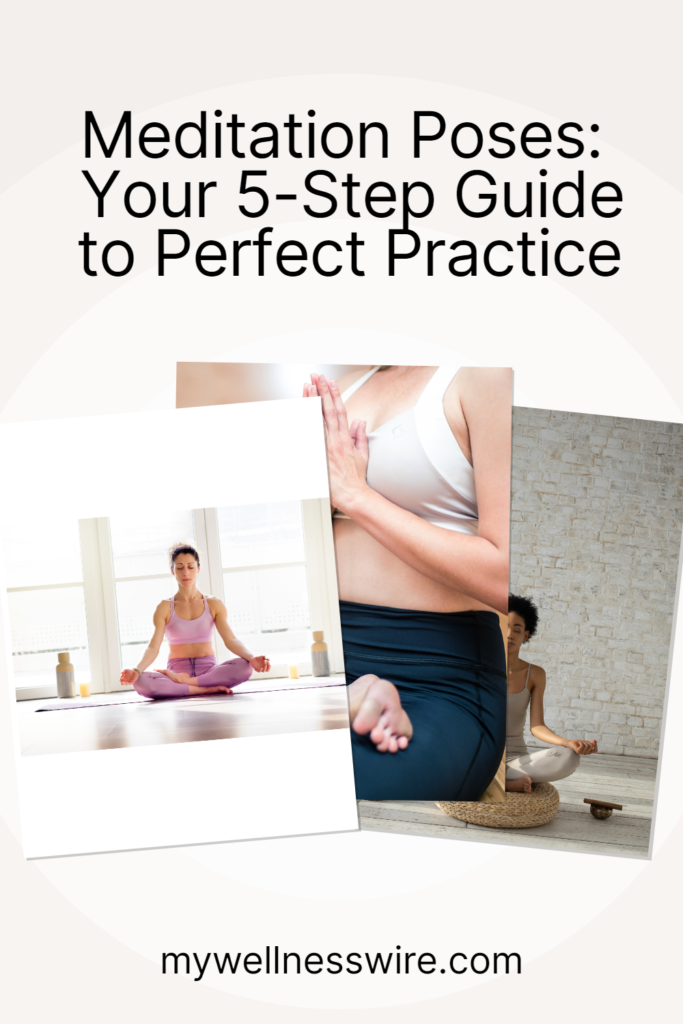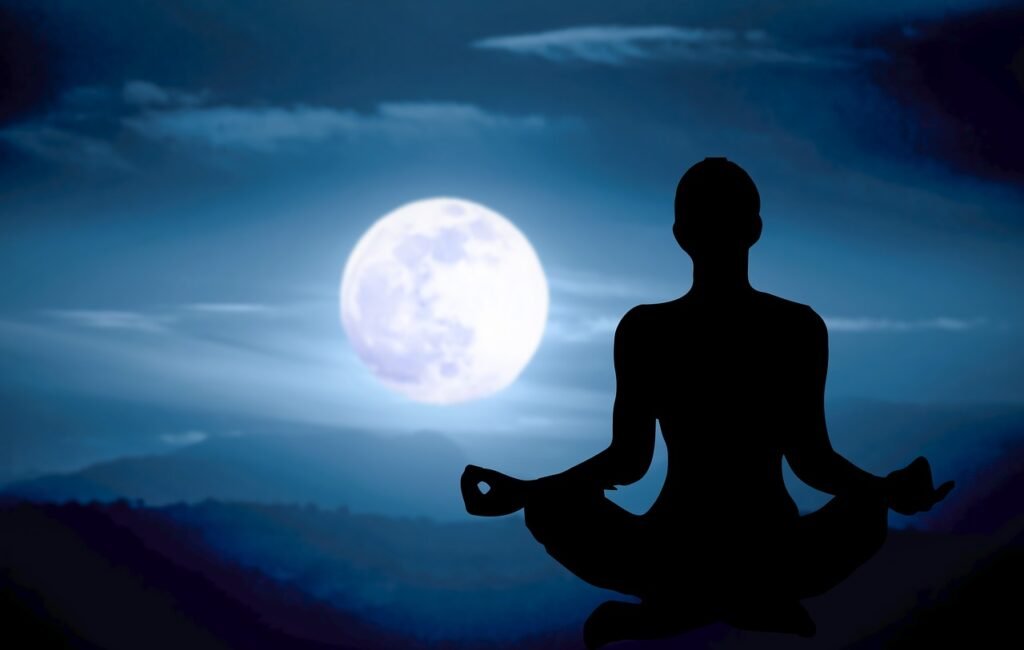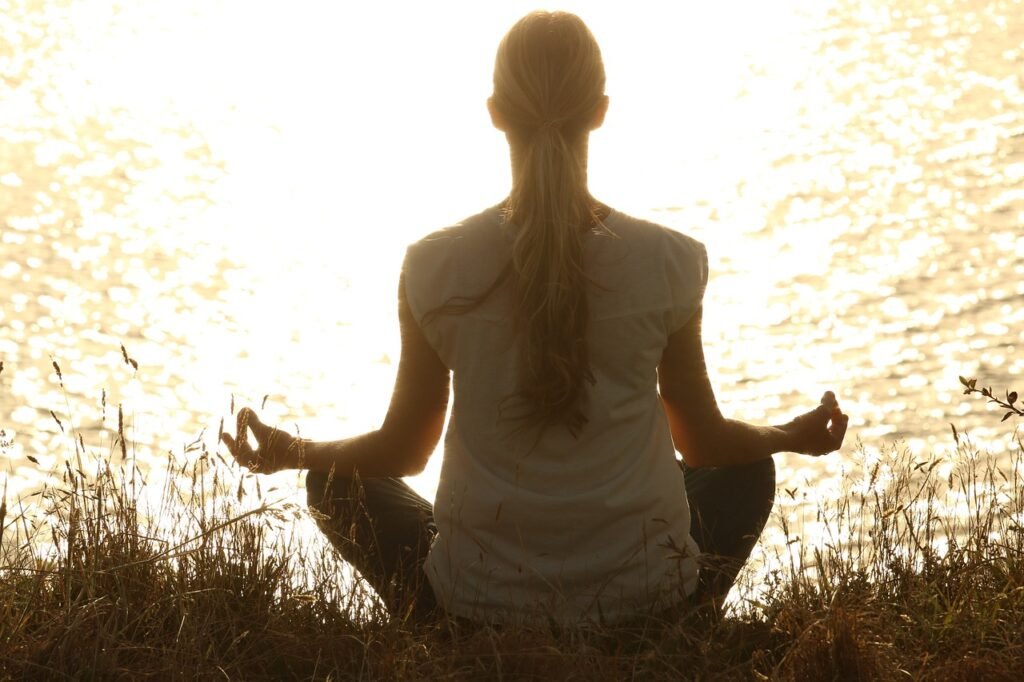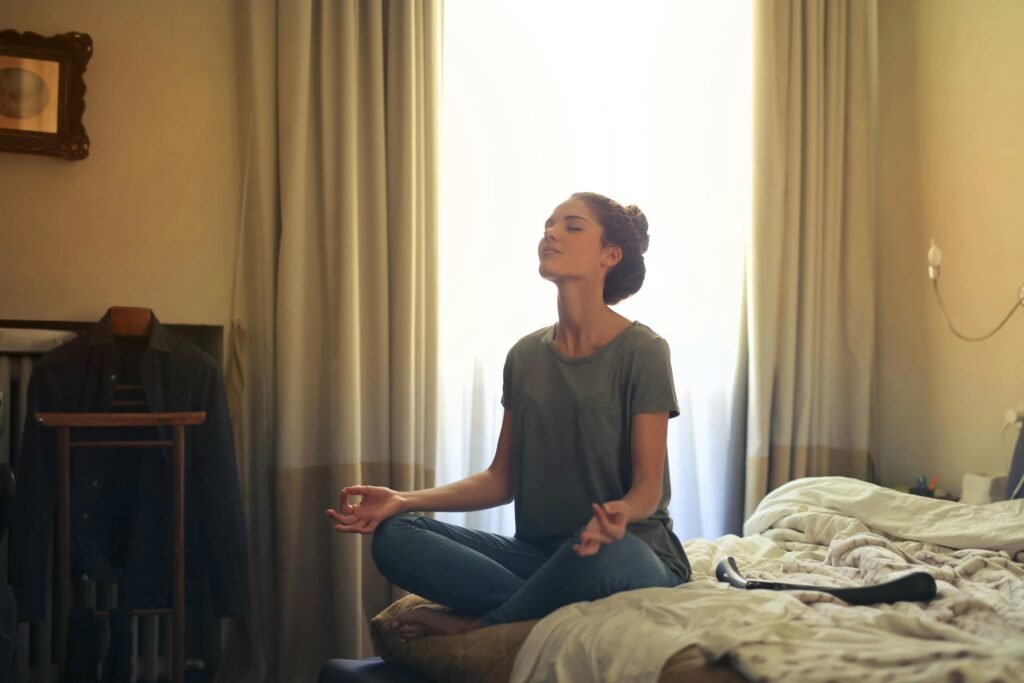
Intro
Meditation poses can significantly influence your practice, transforming it from an ordinary routine into a profound experience. Whether you’re a beginner or a seasoned meditator, understanding and perfecting your meditation poses can enhance your focus, comfort, and overall mindfulness.
In this comprehensive guide, we’ll walk you through a 5-step process to ensure your meditation poses are aiding, not hindering, your practice.
From setting up the perfect space to transitioning out of your meditation pose, follow these steps to deepen your practice and find greater inner peace.
Understanding the Importance of Your Meditation Space
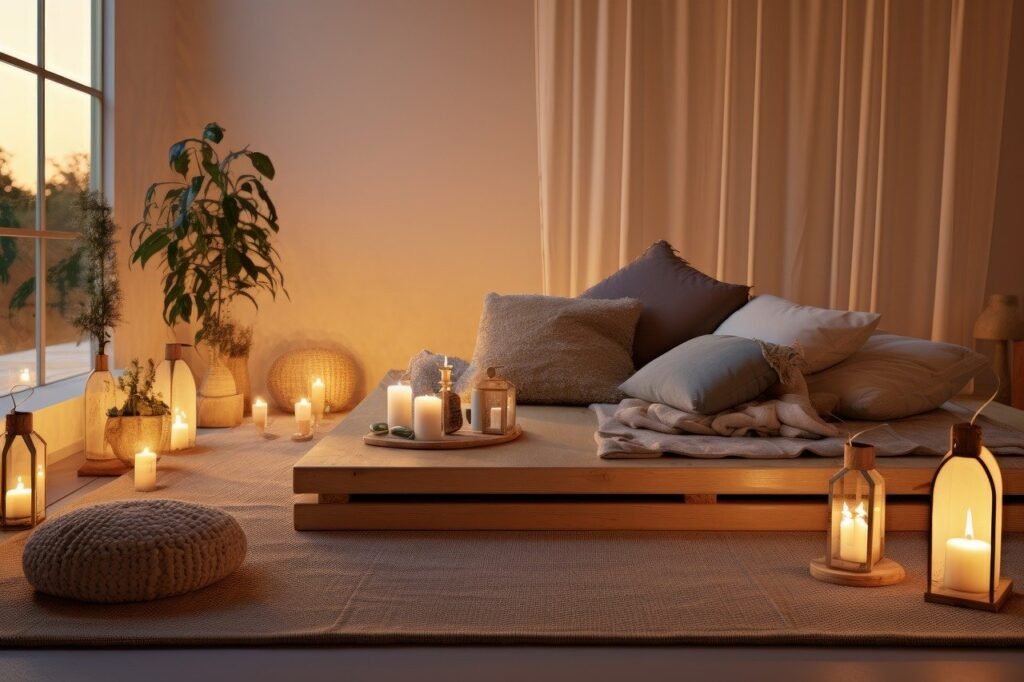
The environment in which you choose to meditate plays a pivotal role in the effectiveness and depth of your practice.
A well-chosen space not only facilitates a smoother transition into a meditative state but also significantly enhances the quality of your meditation.
It’s vital to select a location that is devoid of distractions and noise, providing a tranquil backdrop for your practice.
This doesn’t necessarily mean you need a large or specially dedicated room; even a small, quiet corner of your home can be transformed into a serene meditation spot.
Creating an ambiance that resonates with tranquility and mindfulness is key. This can be achieved by incorporating elements that appeal to your senses and evoke a sense of calm.
Soft, ambient lighting, perhaps through the use of candles or dimmable lights, can help set the right tone, making your meditation space inviting and comfortable.
The addition of natural elements like plants or a small fountain can bring a sense of the outdoors inside, fostering a connection with nature that many find soothing.
The importance of a clutter-free environment cannot be overstated. Clutter can serve as a visual distraction, subconsciously diverting your attention and making it harder to focus. A tidy, minimal space helps in reducing mental clutter as well, allowing for a more focused and deeper meditation experience.
Introducing a dedicated meditation cushion or mat can also significantly impact your comfort level, encouraging you to maintain your meditation poses with greater ease.
The physical comfort provided by these tools can help in minimizing distractions, allowing you to delve deeper into your practice.
Ultimately, the meditation space you create should be a reflection of your personal preferences and what meditation means to you. It should be a place where you feel at ease, supported, and open to explore the depths of your mind and spirit.
Preparing Your Body for Meditation
Engaging in light physical preparation is a crucial step before settling into your chosen meditation pose.
This process not only helps in loosening up the body but also in calming the mind, setting a conducive stage for a fruitful meditation session.
Begin this preparatory phase with gentle stretching exercises aimed at key areas that are prone to stiffness and discomfort during prolonged periods of sitting.
Focus on your neck, rotating it slowly in circular motions to relieve any tension. Then, move on to shoulder rolls, both forwards and backward, to alleviate tightness.
Don’t forget to include stretches for your back and legs, as these areas bear much of the body’s weight when seated.
After addressing physical tensions, shift your focus to your breath, which serves as a bridge between the body and mind.
Engage in deep, conscious breathing exercises to center yourself. Inhale deeply through the nose, allowing your abdomen to expand fully, and then exhale slowly and completely, releasing all the air and any residual stress within the body.
This deep breathing not only oxygenates the blood and relaxes the body but also helps in sharpening focus and drawing attention inward, away from external distractions.
This preparatory stage is not merely about physical readiness; it is also an exercise in mental transition, gently guiding your awareness from the outer to the inner, from movement to stillness.
By dedicating time to prepare your body and mind, you ensure that you enter your meditation practice from a place of readiness and openness, fully equipped to embrace the stillness and silence that meditation offers.
This careful preparation paves the way for a more engaged and deeper meditative experience, allowing you to truly harness the benefits of your practice.
The Art of Sitting: Basic Meditation Poses
Choosing the right meditation pose is crucial for a sustained and comfortable practice. Among the various poses available, here are three foundational ones that cater to different levels of flexibility and comfort.
Lotus Position (Padmasana)
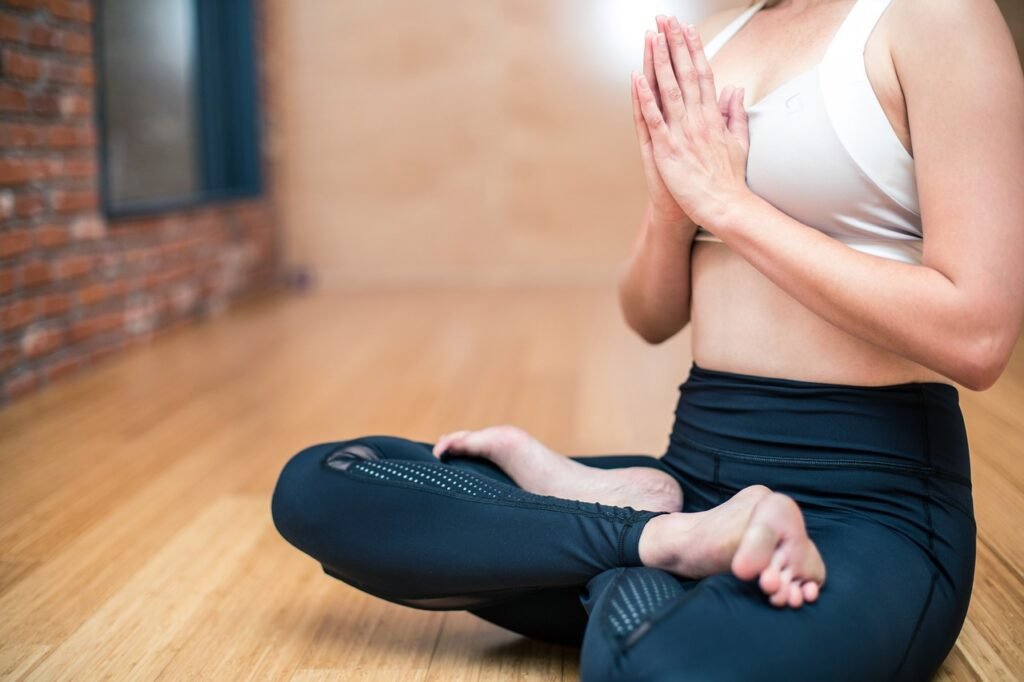
A time-honored pose known for promoting stability and deep concentration. In this pose, you cross your legs and place each foot on the opposite thigh, creating a locked base. This position might require a bit of flexibility to maintain comfortably but is excellent for those who can achieve it.
Half-Lotus (Ardha Padmasana)
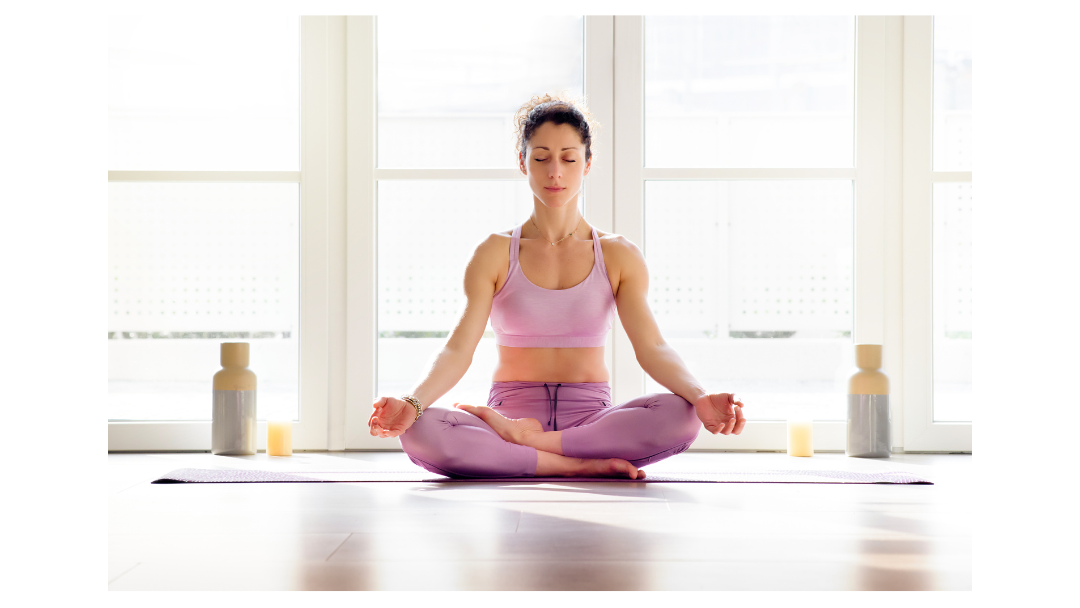
For those looking for an alternative that’s easier on the hips, the Half-Lotus (Ardha Padmasana) is ideal. It involves placing one foot on the opposite thigh while the other foot rests underneath the opposite knee. This pose offers the benefits of the full Lotus Position but is more accessible, making it a good starting point for beginners or those with less flexibility.
Seated Position with a Cushion (Sukhasana with Support)
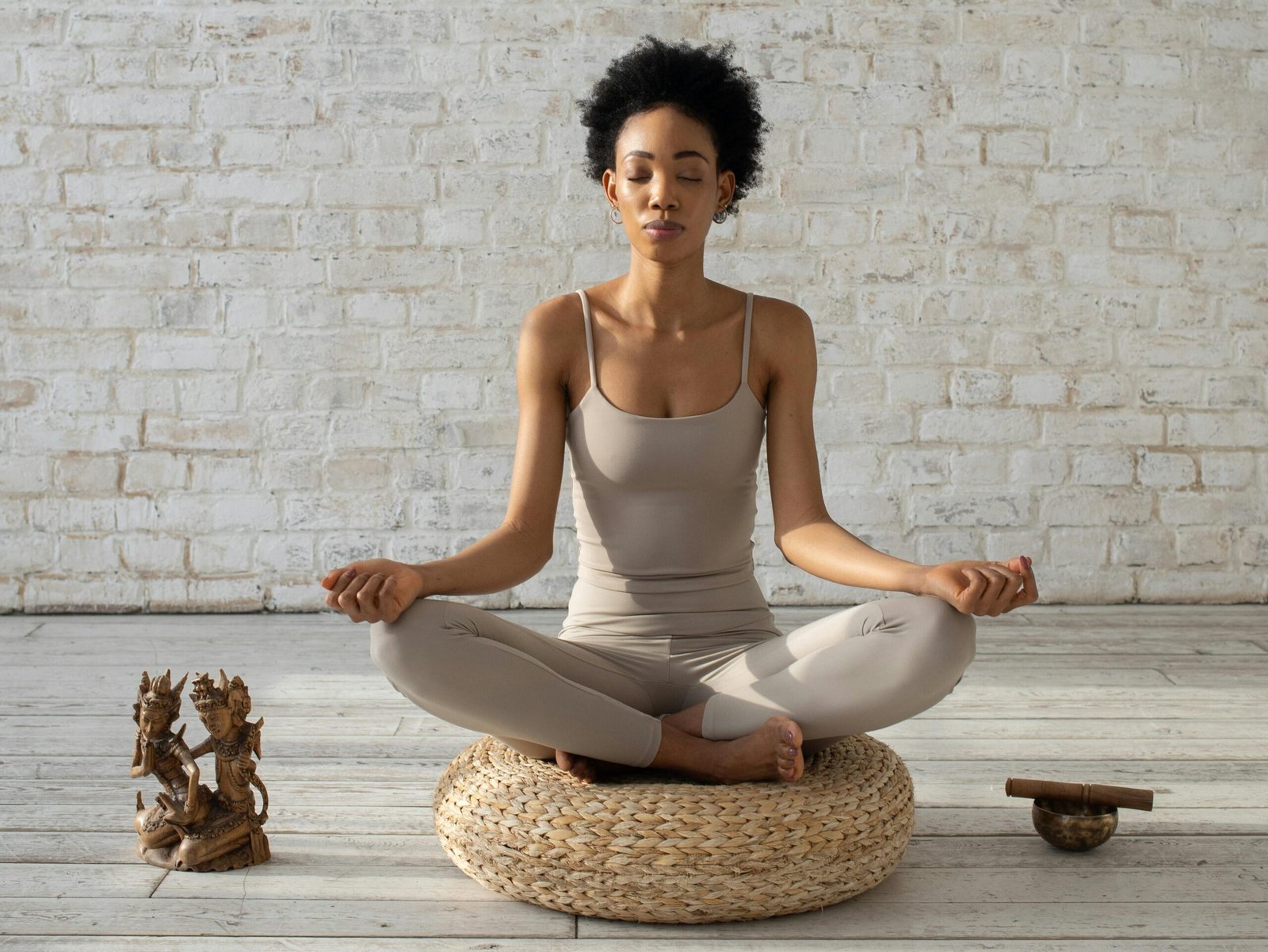
Lastly, the Seated Position with a Cushion (Sukhasana with Support) is a versatile option suitable for practically everyone. Sitting cross-legged on a cushion elevates the hips, making it easier to keep the spine straight and maintain a comfortable posture for longer periods. This pose is particularly beneficial for those who find the lotus positions challenging or uncomfortable.
Our Meditation Cushion Recommendation
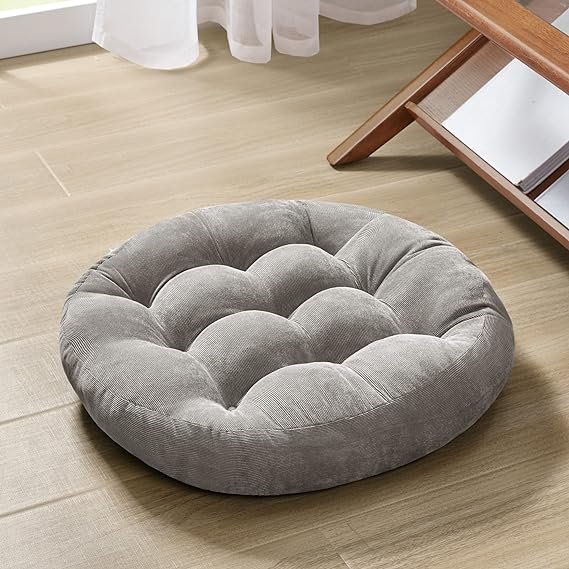
When practicing these meditation poses, remember to keep your spine straight to facilitate unrestricted breathing and energy flow.
The hands can rest gently on the knees or lap, and the eyes can be softly focused or closed, depending on your preference.
Adjustments and additional supports, like cushions under the knees or behind the back, can be used to enhance comfort and alignment.
The essence of selecting a meditation pose lies in finding a balance between alertness and relaxation, allowing you to dive deep into your meditative practice with ease and focus.
Perfecting Your Pose: Alignment and Adjustments
Achieving the right alignment in your meditation pose is essential for a practice that is both comfortable and effective.
It begins with the spine: imagine a straight line running from the base of your spine through the crown of your head, promoting an upright posture that is neither rigid nor slouched.
This alignment supports natural, unrestricted breathing and helps maintain focus and alertness during meditation.
Relax your shoulders, letting them drop away from your ears to release tension. This relaxation should extend to your face and jaw, areas where we often unconsciously hold stress.
Your hands can rest softly on your knees or in your lap, palms up for receptivity or down for grounding, depending on your personal preference and the focus of your meditation.
For many, discomfort can emerge during longer meditation sessions. Listen to your body’s signals and make necessary adjustments.
This might mean shifting your position slightly, adjusting your leg placement, or even transitioning to a different pose if the current one becomes unsustainable.
The use of props is encouraged to support your body and facilitate alignment.
A cushion under your hips can elevate your seat, making it easier to maintain a straight spine, while a folded blanket under your knees can alleviate pressure on your joints.
Remember, the objective is to find a position where your body feels supported and able to remain still, enabling your mind to move into a deeper state of meditation.
Regularly revisiting and refining your pose with these alignment principles and adjustments can significantly enhance your practice.
The emphasis should always be on comfort and stability, allowing you to focus inwardly without being distracted by physical discomfort.
Through this mindful approach to alignment and adjustments, you cultivate a meditation practice that is not only physically sustainable but also deeply enriching for your mind and spirit.
Transitioning Out of Your Meditation Pose
Concluding your meditation practice with care is as vital as the initial preparation and engagement in the pose.
This phase of your practice is an opportunity to gently reacquaint yourself with the external environment while preserving the calm and centeredness achieved during meditation.
Begin this transition by deepening your breath, taking several long, slow inhalations and exhalations. This act of focused breathing signals to your body that it’s time to move from the state of deep internal focus back to an awareness of the surrounding world.
Next, introduce movement back into your body in a gradual and mindful manner. Start with the extremities; softly move your fingers and toes, enjoying the sensation as circulation returns.
Then, stretch your hands and feet, acknowledging the work they’ve done in helping you maintain your meditation pose. Following this, roll your shoulders and neck gently, being attentive to any sensations of release or areas that may still hold tension.
As you feel more awake and present in your physical body, slowly open your eyes if they’ve been closed.
Give yourself a moment to adjust to the light and the visual stimuli around you, doing so with a soft gaze to maintain the tranquility of your meditative state.
Before rising, take a moment to internally express gratitude for your practice and the time you’ve dedicated to it, recognizing the peace and clarity it brings to your life.
Finally, when you feel ready, carefully unfold your legs and use your hands to assist in lifting yourself out of your meditation pose.
Stand up slowly, allowing your body to acclimate to the change in posture.
This mindful transition not only respects the physical body but also extends the benefits of your meditation practice into your daily activities, helping you maintain a sense of calm and centeredness as you move forward with your day.
Pin this post to read later
